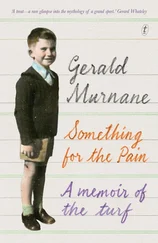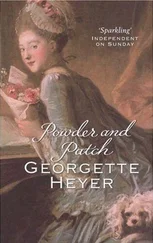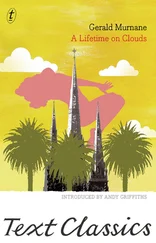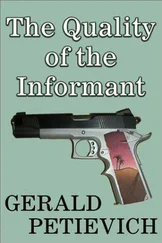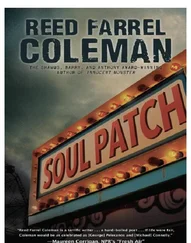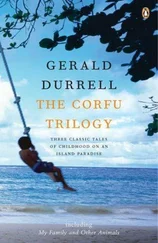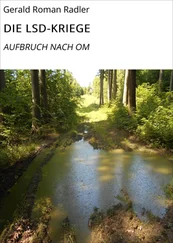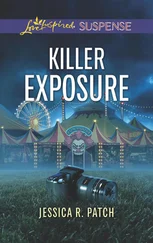Gerald Murnane - Barley Patch
Здесь есть возможность читать онлайн «Gerald Murnane - Barley Patch» весь текст электронной книги совершенно бесплатно (целиком полную версию без сокращений). В некоторых случаях можно слушать аудио, скачать через торрент в формате fb2 и присутствует краткое содержание. Год выпуска: 2011, Издательство: Dalkey Archive Press, Жанр: Современная проза, на английском языке. Описание произведения, (предисловие) а так же отзывы посетителей доступны на портале библиотеки ЛибКат.
- Название:Barley Patch
- Автор:
- Издательство:Dalkey Archive Press
- Жанр:
- Год:2011
- ISBN:нет данных
- Рейтинг книги:5 / 5. Голосов: 1
-
Избранное:Добавить в избранное
- Отзывы:
-
Ваша оценка:
- 100
- 1
- 2
- 3
- 4
- 5
Barley Patch: краткое содержание, описание и аннотация
Предлагаем к чтению аннотацию, описание, краткое содержание или предисловие (зависит от того, что написал сам автор книги «Barley Patch»). Если вы не нашли необходимую информацию о книге — напишите в комментариях, мы постараемся отыскать её.
Barley Patch — читать онлайн бесплатно полную книгу (весь текст) целиком
Ниже представлен текст книги, разбитый по страницам. Система сохранения места последней прочитанной страницы, позволяет с удобством читать онлайн бесплатно книгу «Barley Patch», без необходимости каждый раз заново искать на чём Вы остановились. Поставьте закладку, и сможете в любой момент перейти на страницу, на которой закончили чтение.
Интервал:
Закладка:
At least one murder was reported to have taken place in The Glass Spear . I forgot long ago who the victim or victims was or were and, likewise, who was the murderer. The murder-weapon, I seem to recall, was a spear such as an Australian Aborigine might have made. The tip of the spear was a piece of sharpened glass from a beer-bottle. When I first learned this while I was reading one or another serialised episode, I was disappointed. Until then, I had supposed that the words of the title of the book I was reading referred to a spear made all of glass and perhaps even lying on dark-coloured velvet in a glass display-case in the hall of the large house described in the early pages of The Glass Spear . Or I had supposed, against all odds, that I might read in due course that one or another room in the large house was a chapel or an oratory, or even a library, and that the windows of that room were of stained glass and that one of those windows, late on every cloudless afternoon glowed with a many-coloured design at the centre of which appeared a spear of a rare shade or tint.
I had only a passing interest in the murder or murders and hardly more interest in the chief male character or even the chief female character. These were two young unmarried persons and distant cousins, so I seem to recall. The man seemed dull and predictable; I had no wish to share in his life as I sometimes seemed to share in the life of a young male character. I gave to the image in my mind of the young woman a face that I would have called attractive, but I found her much less interesting than another female character who will be mentioned shortly.
My not having to take part in the life of the chief male character left me free to have a version of myself wander through the setting of The Glass Spear , which setting was a huge sheep or cattle property in the west of New South Wales. The name of the property was Kinie Ger. I spent hardly any time in the paddocks, partly because they were too arid for my liking and partly because I preferred not to meet up with any of the many Aborigines who lived on the property. Some of these worked as stockmen or labourers or kitchen-hands and lived in quarters not far from the homestead; others seemed to have no other homes than a row of humpies beside the creek. The white persons in the homestead referred to these humpies as the blacks’ camp and to the tall woman who seemed the leading person there as Mary, preceded by an epithet that I cannot recall.
The homestead known as Kinie Ger has stayed in my mind more clearly than any other building I have read about in fiction for the reason that the author of The Glass Spear took pains to include in his text details sufficient for the reader to be able to draw an accurate plan of the building. During my conjectured meeting with Sidney Hobson Courtier on his return verandah, the question I most wanted to ask him was whether or not he considered himself such a person as I considered myself: that rare sort of person who cannot be content in any district or any building unless he or she can refer to a map or a plan, even a map or a plan that the person has devised in haste in his or her mind. I was mostly content while I was a ghost-character of The Glass Spear because I mostly wandered through the homestead known as Kinie Ger seeing in my mind my whereabouts on the plan in my mind.
The homestead, as I see it now, nearly sixty years since I last read any reference to it, was shaped like an upper-case letter E. A person approaching the homestead saw the three arms of the letter pointing towards him or her. The central arm comprised the dining-room and the living-room. The outer arms each comprised mostly bedrooms. The long arm from which the three shorter arms projected comprised kitchen, pantries, storerooms, and the manager’s quarters. I seem to recall that Mary and some of her tribe spent much time in the yard behind this arm of the house.
The persons living in the homestead numbered perhaps ten, many of them being members of what would be called nowadays an extended family. I forgot long ago whatever I might have read about most of them. I remember today that one of them was named Ambrose Mahon. I remember also a great deal about Huldah.
As I approach yet again in my mind the three-pronged building that I first read about in the early 1950s, I keep my eyes fixed on the windows of the nearest room in the prong or wing at my left. Behind those windows, the blinds are always drawn. The nearest to me of the rooms in the wing on my left is the furthest room along the corridor for someone standing inside that wing and also the most remote room in the house from the main living areas. The door to that room is always locked, just as the blinds are always drawn in the windows. In the dim, locked room lives Huldah, one of the several siblings of the older generation of the family who live at Kinie Ger. Huldah has lived in her room since she was a child. Her siblings, presumably, know why she hides from the world and perhaps even visit her in secret late at night. The younger persons at Kinie Ger have never seen Huldah and can only guess at her story. They mostly guess that Huldah has some hideous disfigurement that she wants to keep hidden from the world or else that she has an illness of the mind that causes her to live her life in secret.
From the moment when I first read about Huldah, she was for me the chief character of The Glass Spear . I often disregarded the facts of the novel, so to call them, and thought of her as a young woman of marriageable age rather than the middle-aged person she surely was. Given that the version of myself who stepped easily into the scenery of books of fiction was a young man of marriageable age, it was inevitable that I would spend much of my time as a hanger-on at Kinie Ger in trying to attract the attention of the unseen Huldah. I did what little I could think of doing. I walked past her windows several times each day, always with a book in my hands as a sign that the world in which Kinie Ger stood among vistas of arid grasslands with trees in the distance — that world was not for me the only possible world. When I had tired of so walking, I would sit with an opened book in front of me in the living-room, in the central wing of the house. I was far from Huldah’s room, but one of her trusted siblings might have reported to the hidden young woman that the newcomer who had found his way across pages of text into the dim rooms of a remote homestead was a reader; that even in a place I had only read about, I still read about other places.
If it had been possible, the trusted sibling might have reported also that I was a writer. The sibling could not have told Huldah that he or she had seen me writing for hour after hour during some or another hot afternoon at the table of the living-room. As a child, I supposed that my sort of writing could be done only in secret. However, I am able to report that my having read about Huldah and her locked room in a fictional homestead drove me to begin to write the first piece of prose fiction that I can remember having written. As I recall, I wrote during 1950 or 1951 the first few hundred words of a story set on a large rural property in inland Tasmania. Most of what I wrote described the homestead on the property and some of the persons who lived there. I wrote in secret and I hid the finished pages each morning before I left for school. I hid the pages under a loose corner of the frayed linoleum in my bedroom, but after I had written the first few hundred words my mother found them. She quoted several of my sentences to me one afternoon as soon as I had arrived home from school. She took out my pages from the pocket at the front of her apron and she questioned me in the way that many a person would question me at writers’ festivals and such gatherings thirty and more years later. My mother wanted to know how much of my fiction was autobiographical, so to speak, and how much was imaginary, so to speak. She was especially interested in the origins of the two chief characters, a young man and a young woman each of marriageable age whose rooms were at diagonally opposite ends of a huge homestead, which was shaped like an upper-case letter H. The young man’s given name was the same as my own, and my mother seemed to have divined that the young woman’s given name was that of a girl at my school, although she, my mother, could surely not have supposed that the name belonged to a girl in an upper grade who would have been three years older than myself. I spent much time in observing this girl, although she had never caught me at it and may well have been unaware of my existence.
Читать дальшеИнтервал:
Закладка:
Похожие книги на «Barley Patch»
Представляем Вашему вниманию похожие книги на «Barley Patch» списком для выбора. Мы отобрали схожую по названию и смыслу литературу в надежде предоставить читателям больше вариантов отыскать новые, интересные, ещё непрочитанные произведения.
Обсуждение, отзывы о книге «Barley Patch» и просто собственные мнения читателей. Оставьте ваши комментарии, напишите, что Вы думаете о произведении, его смысле или главных героях. Укажите что конкретно понравилось, а что нет, и почему Вы так считаете.


